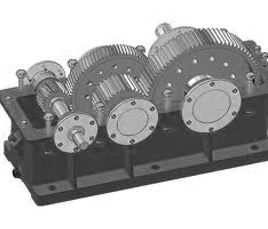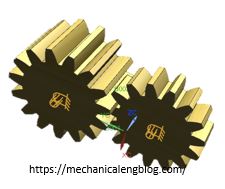We regularly meet engines that pull items up and down, such as in motorcycle shops, rice mills, industrial workshops, or chemical stirrers, paint stirrers, and quality mixers. It’s common to see a 3-phase electric motor equipped with a gearbox, which can be placed separately or integrated into the motor. These parts are vital to a vehicle’s engine’s performance and longevity, as well as changing the engine speed to meet user needs.
So what is a gearbox? And what is its role? Let’s learn about it together.

Some concepts of Gearbox:
The gearbox is a direct-coupled, constant-ratio transmission mechanism that, in most cases, is accompanied by a stirrer motor and has two major effects:
Reducer: Because the motor (according to international standards) often operates at a high speed while the actual requirement (output speed) is low, a reducer is required to adapt the rotation to the necessary speed.
Increase the load: Installing the reducer on the motor increases the torque, thereby increasing the load capacity and strength of the output shaft.
Another feature to note is that we can only adjust (reduce) down to a certain rotational speed, unlike the inverter that can adjust the output shaft for many different speeds.
– Transmission coefficient:
The gear ratio is the ratio of the speed variation of the gear box motor’s input and output shafts, which is a measure of the speed variation of the original machine motor with the motor output (actual use speed). Gearbox is a reduction that allows you to save money.
For example, if the gear ratio is 1/10, the machine motor starts at 10 rpm and after changing (reducing) through the reducer, the output speed of the spinning shaft is 1 rpm/s. The engine speed has been decreased by a factor of ten.
Role:
When we think about electric motors, we instantly think of high rotating speeds. When used in actual production, some circumstances will necessitate a slower operating speed. To lower the motor’s speed to meet the needs of electrical machines.
Furthermore, it is highly expensive to produce engines with tiny capacities in order to meet the needs of usage. While big capacity, high rotational speed motors are frequently small. Simultaneously basic and low-cost design.
In addition to assisting in reducing the speed of the motor to meet machining demands. The employment of a reducer also considerably increases the engine’s load.
Classification of Gearbox:
There are several criteria for classification, but the most basic and often used are two:
– According to the transmission principle:
According to the transmission principle, they are classified as cylindrical gears, planetary gears, bevel gears, worm gears, and so on. There are several sorts of such principles, each with its own set of advantages and downsides. In each case, it is appropriate for usage. Helical gears, for example, are inexpensive. And the operation is steady, with the sole constraint being the axes’ drive. Planetary gears are coaxial, while bevel gears are used for zero shafts. And the worm gear type is silent and can self-brake…
– According to the deceleration level: There are three levels of deceleration: one, two, and three.
The type of reducer whose output is matched to the needs by a series of gear ratio adjustments. A multi-stage reducer is one that changes the number of teeth on the gears. A single-stage reducer, on the other hand, changes the number of gears just once. Reducers can be classified into several types: 1st level, 2nd level, 3rd level…
The number of steps corresponds to the number of times the gear ratio is adjusted. For example, if you want a gear ratio of 3, all you have to do is install a pair of gears with the number of teeth matching to this gear ratio of 1:3.
A 1-stage reduction is a Gearbox that only transmits once. We also have 2-speed and 3-speed gearboxes. When building a reduction gearbox, individuals frequently make a multi-speed box. Each level has gear ratios ranging from 3-5.
Application:
In general, applications in all sorts of transmissions are quite broad. Conveyor belts for food processing, animal feed, packaging production, and so on. In mixing, steel rolling, plating, boiler feed systems, and so on.
Motorcycles and watches are two prominent and widespread applications in everyday life.
The sorts of boxes often used on the market nowadays are primarily well-known Taiwanese brands such as Dolin, or domestically made items of other companies. Furthermore, due to the popularity of the Taiwanese product, it is extremely easy to purchase huge amounts of this product in a short period of time. The next step is to determine each supplier’s warranty and product pricing.
Gearbox goods imported from Italy, Germany, and Japan are included in the high-end category. However, the prices are frequently exorbitant, and the waiting period for items is lengthy. It is more difficult to replace a broken accessory.



Leave a Reply